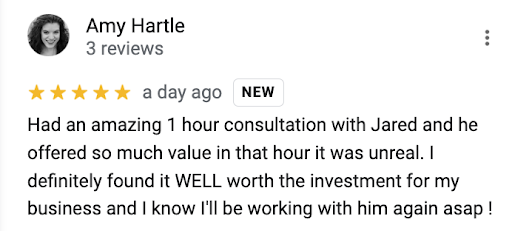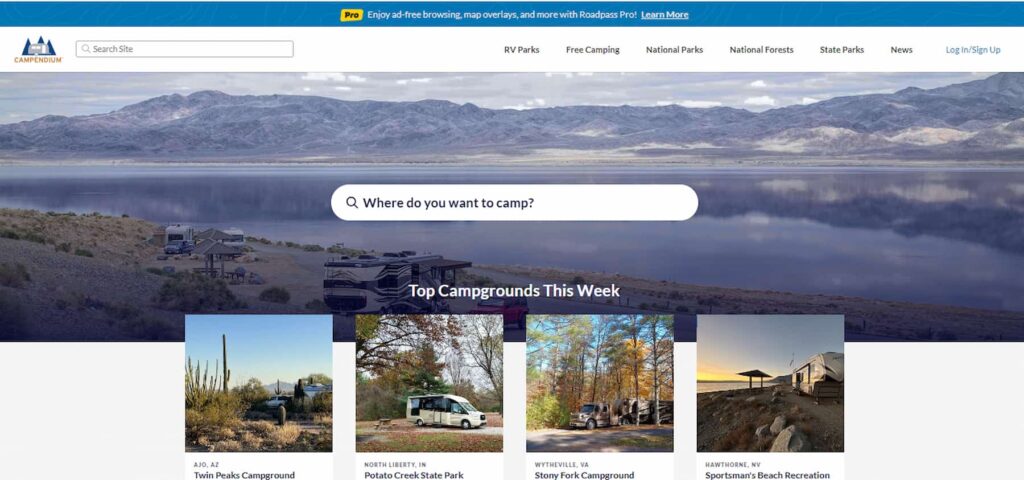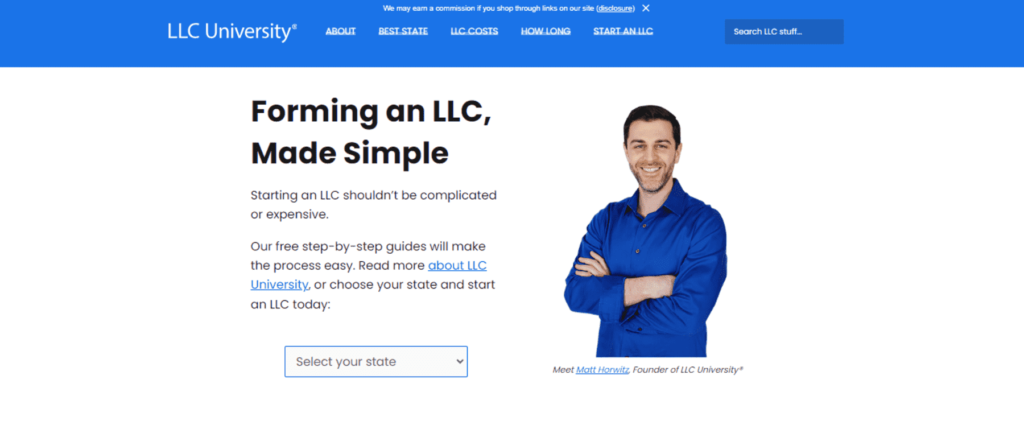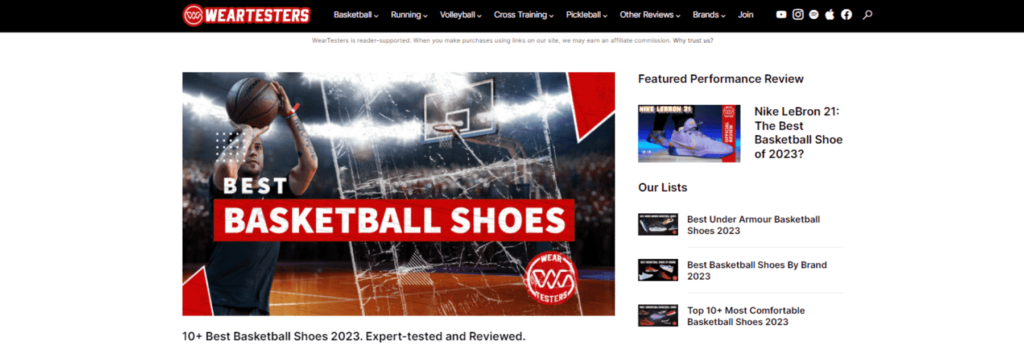We’re diving deep. I mean, really deep.
I got Tony Hill and Thomas Jensen to join me on Twitter (X) Spaces, and we dissected what it takes to not just survive, but thrive in the aftermath of Google’s Helpful Content Update (HCU).
We analyzed 9 sites that did pretty well in the HCU. No drops at all. What were they doing that was unique?
Well, you can listen to the 70 minute recording (and I really recommend you do)! In addition, though, you can ALSO read my recap below!
At the end, I share an analogy that might really help you shape your mind around this HCU moving forward.
Quick Navigation
Setting the Stage
First off, let’s get one thing straight. No one “won” the HCU. It’s a negative classifier, sitting over top of your site. Yet, some sites managed to skate through it (pun intended, you’ll see why later in the email).
If a site “won”, it’s only because other sites previously ranked higher slipped. So, it’s probably best to say the 9 websites on our list “survived”…
We’re peeling back the layers to understand why each of these sites escaped Google’s rath… and what you can learn from each.

| I don’t claim to have all the answers, but I do see hundreds of websites every month at my agency. And, our popular Website Review and Consulting services might be a big help to you right now! |
Bonsai Empire
Tony kicked things off with BonsaiEmpire.com. This isn’t just a site; it’s a masterclass in building a community around your passion.
It ranks #1 for “bonsai tree” and owns the space with a plethora of related terms.
- Content Depth: They have a “Bonsai 101” basics page. Their top page “What is a Bonsai” explains what bonsai is in-depth. They clearly had a Content Plan and executed it well.
- Community and Social Proof: 240k Facebook followers, 480k YouTube subscribers, 158k Instagram followers. These numbers don’t lie. They’ve built an empire, and they’ve done it by fostering a community of engaged users.
- Monetization with a Side of Stellar User Experience: No ads. Zero. They’ve flipped the script and focused on bonsai courses, ensuring that when you land on their site, you’re there for the love of bonsai, not bombarded by ads.
- Design and Architecture That Speaks Volumes: Custom branded design, thoughtful site architecture, and collapsed content sections. They’ve thought of everything, ensuring that your journey through their bonsai world is as seamless as it gets.
Tony’s top reasons it survived: Excellent user experience, active community, detailed niche topical coverage.
Golfer Geeks
Thomas brought GolferGeeks.com into the spotlight, showcasing a site that’s breaking the mold of traditional niche sites.
This one looks a lot more like a classic “niche site”, except that they’re doing a lot differently.
Ranking for some of the most coveted keywords in the golfing world, they’ve managed to carve out a space that screams authenticity.
- Authenticity at Its Best: Custom images across reviews, real photos, real experience. They’re not amazing images, but they create a complete narrative about the owner’s involvement.
- A User Experience That Pulls You In: They’ve struck the perfect balance between providing value and showcasing products, ensuring that you leave feeling informed, not sold to.
- Affiliate Reviews Done Right: Their reviews showcase pros/cons well, creating a good user experience. As you scroll, it doesn’t aggressively push products like some affiliate sites.
Thomas’ top reasons it survived: Custom imagery establishes authority, easy to find conclusions in reviews, quality user experience.
| Unique images are becoming more and more important. If you want help learning how to take amazing photos with nothing more than your phone, take a look at my course Website Photography Made Easy. I was a pro photographer for over a decade and made a course to teach content creators easy techniques. |
Dollar Sprout
I took a moment to shine the spotlight on DollarSprout.com, a site that’s navigated the HCU with a finesse that’s worth noting. With a DR of 69, they’re not a small sitel, and their approach to content and user experience reflects that.
- A Business Offer That Goes Beyond Ads: They’ve built a clear, compelling business offer around their cash back rewards program, contributing to the narrative that Google prefer’s real businesses now.
- Content That’s Crafted for Real People: One article I reviewed is a pretty darn good look at what detailed, frequently updated content should look like. It uses very specific money earned figures and platform terminology, evidencing first-hand experience.
- More Than a Website: They have 16k YouTube subs and 17k Facebook followers, which are very hard to replicate. They get 1.5M monthly Pinterest impressions, another strong external signal. Finally, they have an active podcast!
My top reasons it survived: Business offer beyond ad revenue, external traction from podcast, well-executed visual brand.
P.S. Apparently Niche Pursuits has a podcast episode from a few years ago interviewing the founder (from before I started hosting). Definitely on my list to go back and listen to now!
Smoking Meat
Tony brought us back to the world of niche passion with Smoking-Meat.com. Ranking #1 for smoking meat and related terms, this site is a testament to what happens when passion meets SEO.
- An Active Community: This site has an active forum,, user comments, and a community that’s thriving. Google loves this kind of user involvement.
- Ads, But Balanced: Yes, there are ads, but they’ve found a way to balance it out, ensuring that your user experience remains uninterrupted. Again, we’re not saying the ads are great here, but apparently this is a case of the user experience being “good enough.”
- Branded Search Traffic: We’ve seen it on many to most of the sites we reviewed. The brand name itself is showing up as a keyword and getting monthly traffic.
Tony’s top reasons they survived: Passionate site owner, active forums/comments, product offerings retain users.
| 6 Steps to Fix a Failing Website – my newest YouTube tutorial is live! |
Dragons Diet
Thomas introduced DragonsDiet.com, a site that’s seamlessly blended e-commerce and content, serving the lizard-loving community with a side of live insects.
- Ecommerce as a Stamp of Authority: Selling live insects for pet lizards, they’ve positioned themselves as the go-to authority in their niche. They lead with an ecom play, backed by their content (not the other way around).
- Immersive Content: Images appear to be custom. Articles are nicely formatted in a very readable way, with things like charts.
- UX That’s Crafted with Care: Well-formatted articles, thoughtful UX, and a site that’s built to serve.
Thomas’ top reasons for survival: Ecommerce bolsters authority, custom images, excellent user experience.
Saws on Skates
I wrapped up our deep dive with SawsOnSkates.com, a site that’s embraced authenticity and carved out a space for itself in the world of DIY. This is another more “traditional” niche that more than survived the HCU, with an approachable DR 39:
- Images That Tell a Story: Authentic, genuine, and telling the story of a brand that’s all about keeping it real. It’s impossible to think that these folks are faking it.
- An Origin Story: The detailed founder origin story on About page builds connection.The founder shares he’s a contributor to other sites to establish expertise, but hasn’t maximized SEO benefit of this exposure.
- Strong Choices in Language: Articles use authoritative language and convey hands-on experience. Articles also use lots of “I” language and words that show experience AND expertise.
My top reasons for survival: Unfakeable experience, immersive language that conveys expertise, not “SEOing” their site.
Campendium

1. Mastery of User Experience and Site Design:
Campendium’s website design is a masterclass in user experience. The homepage immediately captivates visitors with its interactive elements, featuring images of various campsites that invite exploration.
This isn’t just about looking good; it’s about creating an intuitive journey for the user. By clicking on these images, users can delve into detailed information about each campground, making the process of finding camping information both enjoyable and efficient.
2. Engaging Content Through Diverse Modalities:
What sets Campendium apart is its adept use of various content modalities. The site doesn’t just rely on text; it incorporates videos and images to create a rich, multi-sensory experience. This approach acknowledges that different users prefer different types of content.
Some may like to read detailed descriptions, while others might prefer a quick video overview. By catering to these diverse preferences, Campendium significantly increases user engagement and time spent on the site.
3. Balanced and Focused Content Strategy:
Campendium’s content strategy strikes a perfect balance between brevity and depth. With an average of around 500 words per text portion, the site focuses on delivering quality and relevance.
This approach demonstrates that in the world of SEO and content marketing, it’s not about overwhelming your audience with quantity, but engaging them with content that is both informative and to the point.
4. Personal Connection and Trust Building:
The presence of the site’s founder and author adds a personal touch that many websites lack. By having a visible and active presence, the founder creates a direct line of communication and trust with the audience.
This personal connection is further enhanced by the active engagement in the comments section, where the author’s responses to user queries and discussions build a sense of community and trust.
5. Establishing Topical Authority:
The high level of user interaction, with over 200 comments on some pages, is a testament to Campendium’s authority in its niche. This isn’t just about having a lot of content; it’s about having content that resonates with and engages a community.
Such active participation not only enhances the site’s SEO through user-generated content but also solidifies its position as a trusted resource in the camping community.
6. Multi-Channel Brand Presence:
Campendium’s brand extends beyond its website. With a significant following on platforms like Instagram and a popular podcast, the site has successfully created a comprehensive online presence.
This multi-channel approach not only broadens their reach but also caters to users who might prefer one platform over another, ensuring that they capture a wider audience.
7. User-Centric Content and Navigation
Lastly, the site’s success in recent content updates can be attributed to its unwavering focus on user-centric content. The well-organized mega menu makes navigation a breeze, allowing users to quickly find information relevant to their interests in outdoor activities. This ease of navigation is crucial in retaining users and reducing bounce rates.
Campendium’s success story in the post-HCU world is a blend of engaging user experience, diverse content modalities, personal touch, strong community engagement, and a robust multi-channel brand presence.
LLC University

1. Comprehensive Programmatic Approach:
LLC University stands out for its programmatic approach to content. This methodical strategy is evident in the site’s structure and the sheer volume of content available.
The operator, possibly working full-time with assistance, has created a platform that is both comprehensive and user-centric. The homepage, with its state-selection call to action, exemplifies this focus, guiding users effortlessly to the information they need.
2. Depth and Detail in Content:
The content strategy of LLC University is tailored to its audience’s need for detailed, comprehensive information. Given the complexity of setting up an LLC, the site’s text-heavy approach, averaging around 2,000 words per article, is not just appropriate but necessary.
This depth ensures that users have access to all the information they need to make informed decisions, a critical factor in the site’s success.
3. State-Specific Customization:
A standout feature of LLC University is its state-specific content. Each state has its own dedicated page, offering tailored information relevant to forming an LLC in that particular state.
This includes practical advice, links to government websites, and step-by-step guides with screenshots. This level of customization and attention to detail demonstrates a commitment to providing actionable, practical advice, greatly enhancing the site’s value to its users.
4. Expertise and Authentic Recommendations:
The content on LLC University is characterized by a strong expert voice. The site provides clear, sometimes contrarian, recommendations and opinions.
This authenticity and willingness to go against the grain, even at the expense of affiliate marketing interests, underscore the site’s commitment to genuine advice and expertise.
5. Balancing SEO and Affiliate Marketing:
Despite its focus on content and expertise, LLC University skillfully integrates SEO strategies and affiliate marketing. This includes the use of keyword-rich anchor texts and comprehensive reviews of services like Northwest Registered Agent.
The site manages to balance these elements without compromising the quality and authenticity of its content.
6. Simplified Site Structure and User Experience:
The site’s design is simple, with a clear menu and easy access to key articles. This simplicity is a strategic choice, enhancing the user experience by making it easy for visitors to navigate and find the information they need without feeling overwhelmed.
I noted that this is an example of a site that DOES focus on SEO in some parts (look at all those keyword optimized links on the home page).
Here are 19 Ideas you can implement to your website in the post-HCU environment.
Wear Testers

1. Authenticity and Quality of Content:
Wear Testers raises questions about the authenticity of their shoe testing process. While they claim to test the shoes, showing this process could enhance their credibility.
So… another example of where every site that survived isn’t getting it “perfect”.
2. Multi-Platform Engagement and Brand Strategy:
The site’s success is bolstered by its significant presence on platforms like YouTube, contributing to substantial direct and branded search traffic. This multi-platform engagement is part of a comprehensive brand strategy that extends beyond the website.
3. Strategic SEO and Internal Linking:
WearTesters employs a strategic approach to internal linking with descriptive and varied anchor texts, enhancing its topical authority and SEO effectiveness. This strategy supports the site’s overall search engine visibility and user navigation.
4. Diverse Authorship and Relatability:
The site features multiple authors, each bringing their unique perspective, which adds depth and relatability to the content. This diversity makes the site more appealing to a broader audience. Further, their authors seem to have tangible experience in their field.
5. Navigation and User Experience:
The site’s navigation is well-organized, with a focus on SEO-friendly anchor texts. The menu navigation is tailored to specific interests like basketball shoes, with categories like ‘best outdoor basketball shoes’ and ‘best budget basketball shoes’.
This targeted approach likely enhances the user experience by making it easier for visitors to find relevant content.
WearTesters combines detailed, authentic content creation with a strong multi-platform engagement strategy.
Key Takeaways:
Ok, so what do these sites tell us about what factors might be important for the HCU… and for your site going forward?
- User Experience is King: Engaging design and interactive elements can significantly enhance user engagement.
- Content Quality Over Quantity: Focusing on the relevance and quality of content, rather than just word count, is crucial.
- Authenticity and Transparency: Showing the process behind your content can boost credibility and trust.
- Diverse Content Modalities: Catering to different user preferences through various content types can keep your audience engaged longer.
- Strong Brand Presence: A multi-channel strategy, including social media and podcasts, can amplify your reach and strengthen your brand.
Wrapping It Up: An HCU Survival Guide?
Again, you can listen to the 70 minute recording here if you want more details.
No site is perfect, and we saw that in our examples. So, you don’t have to be perfect to survive the HCU.
More and more, the HCU seems to be like taking a test from back in school… it’s a series of questions, and your site gets a score at the end → total right and total wrong.
Given that some sites lost 80% of their traffic and others only 20% (and everything in between), this probably isn’t a “pass/fail” type of grade. More in line with an A, B, C, D, F, etc.
And, there is evidence of “grading on a curve” – where sites in different niches are graded “harsher” than sites in other niches.
These examples have nailed some key signals that Google is looking for. These sites have done things like built communities, stayed true to their niches, and most importantly, they’ve kept it real.
P.S. – if you want help evaluating your website against perceived HCU factors, take a look at my Helpful Content Update Analysis Spreadsheet!

